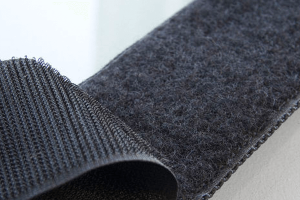Selecting the right elastic bands for sewing garments is crucial for ensuring comfort, functionality, and durability. Elastic bands come in various widths, materials, and stretch capacities, each suitable for different applications and garment types. Here, we delve into the essential considerations to guide you in making the best choice for your sewing projects.
Material and Quality
Type of Material
Elastic bands are made from various materials, including natural rubber, synthetic rubber, and a combination of rubber with polyester or cotton fibers. Each material offers distinct advantages:
- Natural Rubber: Offers excellent stretchability and recovery, ideal for sportswear and activewear. However, it may cause allergies for some individuals and degrade faster when exposed to UV light and oils from the skin.
- Synthetic Rubber (e.g., Spandex, Lycra): Provides high elasticity and durability, suitable for a wide range of garments. It is hypoallergenic and resistant to body oils and perspiration.
- Rubber with Fiber Combinations: Enhances fabric strength and durability, making it suitable for waistbands and cuffs. The fiber content improves comfort against the skin.
Quality Considerations
High-quality elastic bands retain their elasticity over time and with repeated use and washing. Look for bands that do not easily fray at the edges and maintain their stretchability without becoming loose or brittle. The quality of the elastic band directly impacts the garment’s lifespan and performance.
Width and Stretch Capacity
Determining the Right Width
The width of the elastic band is critical for the garment’s intended function. Narrow elastics (1/4″ to 1/2″) are perfect for light applications like baby clothes and lingerie, while wider elastics (1″ and above) are ideal for waistbands in pants or skirts. Consider the garment’s weight and the level of support needed when selecting the width.
Stretch Capacity
Elastic bands come with different stretch capacities, usually categorized as light, medium, or heavy stretch. Light stretch elastics are suitable for garments that require a gentle cinch, whereas heavy stretch elastics provide significant tension, ideal for activewear or performance garments. Choose the stretch capacity based on the garment’s fit and comfort requirements.
Application and Durability
Garment Type and Application
Different garments require specific types of elastic bands. For instance, clear elastic bands are perfect for sheer fabrics, ensuring the elastic is not visible through the garment. For heavier fabrics or garments requiring more support, such as pants or jackets, use a wider and more durable elastic.
Durability Concerns
Consider the elastic band’s exposure to stress, chemicals (such as chlorine), and repeated washing. Select elastics that are specifically treated for high durability and resistance to these factors. This is especially important for swimwear and activewear, where the elastic will undergo significant stress and exposure to harsh conditions.

Cost and Availability
Budget Considerations
The cost of elastic bands can vary widely based on material, quality, and brand. While it may be tempting to opt for cheaper options, investing in higher-quality elastics can save money in the long run by reducing the need for repairs or replacements.
Sourcing Elastic Bands
Availability can be a concern, especially for specialized elastics. Plan your purchase ahead of time, especially if ordering from suppliers with longer lead times or if you require a large quantity.
In conclusion, selecting the right elastic bands for sewing garments involves considering the material and quality, width and stretch capacity, specific application needs, and durability concerns. Balancing these factors with your budget will help you choose the best elastic bands for your sewing projects, ensuring that your garments are comfortable, functional, and long-lasting.
